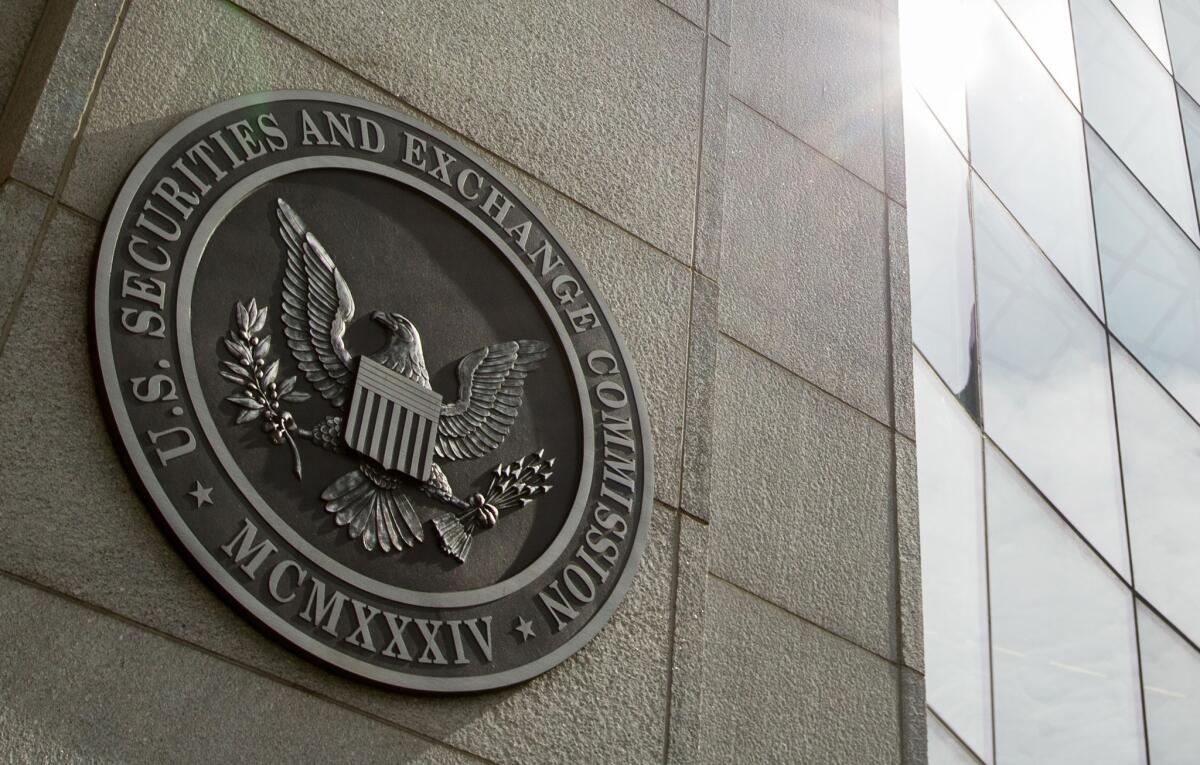How much do CEOs make compared to their workers? We’ll know in 2018

The Securities and Exchange Commission expected to adopt a rule compelling public companies to report the ratio between their chief executive’s annual compensation and the median, or midpoint, pay of employees.
- Share via
The Securities and Exchange Commission approved a new rule Wednesday morning requiring publicly traded companies to disclose the pay gap between chief executives and their workers.
Chief executives’ pay is already disclosed in company proxy statements, so what’s new is that firms will now have to publish their median worker compensation, or the number at which half of employee pay is above and half is below.
That figure will then be compared to the chief executive’s compensation, starting in 2017, with financial statements released the following spring.
The requirement passed by a 3-2 vote. Commissioners Daniel Gallagher and Michael Piwowar, both Republicans, cast the no votes.
Commissioner Kara Stein, who voted in favor of the rule, said the ratio would be “valuable” to investors and could give insight into how companies manage human capital.
Gallagher borrowed a phrase from Justice Antonin Scalia, calling the pay ratio requirement “pure applesauce.”
Both Gallagher and Piwowar said that there was no evidence the pay ratio would benefit shareholders and that there was already good data available for investors to make informed decisions on executive compensation.
A study by the Economic Policy Institute earlier this year found that in 2014, chief executive pay was 303 times higher than the average worker’s pay.
The SEC’s action stems from the 2010 Dodd-Frank law, which was intended to protect investors after the 2008 financial crisis.
Here’s why some companies and lobbying groups have balked at the ratio disclosure:
Time-consuming and costly
The SEC estimated the requirement would cost companies about $73 million, but the U.S. Chamber of Commerce puts the price tag far higher -- at an “egregious” $700 million a year or more.
The chamber said most large companies do not have a centralized payroll, which would make the cost of compiling data “prohibitively high.”
No meaningful information
The U.S. Chamber of Commerce and other business groups have said the pay ratio can vary greatly between industries and businesses, without relevance to a company’s financial performance.
According to an analysis from the chamber, changes in chief executives’ pay are related to the “ebb and flow” of market performance.
“It is not surprising that executive compensation decreased at a disproportionate rate compared to the rest of the workforce in the economic downturn and then the reverse in the subsequent upswing,” according to the analysis.
SIGN UP for the free California Inc. business newsletter >>
The analysis also said pay ratios could also reflect company changes unrelated to executive pay. It mentioned the example of a chief executive who chose to outsource production and focus the company’s energy on marketing and research, which dramatically dropped the executive-worker pay ratio.
“If the CEO pay ratio would prove to be a meaningful metric to investors, CEOs would have a better incentive to contract out any activities primarily performed by low-wage workers,” the analysis said.
Designed to embarrass
Companies have argued that the ratio disclosure is meant to embarrass them. Supporters agree with this, saying that chief executives’ pay is out of hand.
A Chamber of Commerce analysis said the “name-and-shame tactic” will be unlikely to change the behavior of companies, and that there is “little evidence” shareholders want this requirement.
“SEC rules are not meant to serve as an ideological bulletin board for whatever political party happens to be in power,” the Chamber of Commerce said in a letter to the commission opposing the rule. “But that is precisely what the authors of the CEO pay ratio rule had in mind; it is intended to help carry the income inequity message.”
For more business news, follow @smasunaga.
ALSO:
Disney earnings soar 11%, but changes in TV industry pose risks
Blue Shield of California owes $82.8 million in Obamacare rebates
DreamWorks Animation loses $38.6 million in second quarter
More to Read
Inside the business of entertainment
The Wide Shot brings you news, analysis and insights on everything from streaming wars to production — and what it all means for the future.
You may occasionally receive promotional content from the Los Angeles Times.











